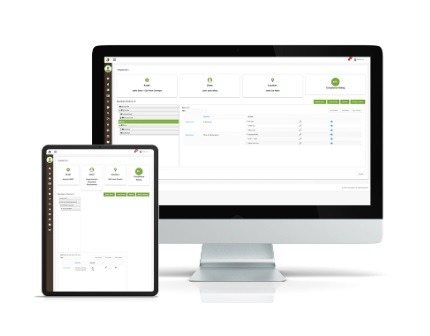Inspection forms and templates are essential tools for businesses across various industries, allowing them to ensure that standards and regulations are met efficiently and effectively. However, with the vast array of forms and templates available today, choosing the appropriate ones to suit specific business needs can be a daunting task. Selecting the right Inspection Forms and Templates can be the difference between success and failure for your business.
When it comes to choosing the right inspection forms and templates, various factors need to be considered. From the type of business to the compliance regulations, it is crucial to identify what suits your business. Therefore, it is important to conduct a thorough assessment of your business needs, to determine the exact type of forms and templates that will be helpful.
To guide you through the process of selecting the right inspection forms and templates, this blog post will provide a comprehensive guide that will enable you to make informed decisions regarding your business needs.
Analyze Your Business’s Unique Needs
When choosing the right inspection forms and templates for your business, it’s crucial to start with a thorough analysis of your business’s unique needs. Your inspection process should be tailored to the specific nature of your business, including its industry, size, and goals. This requires taking into account the specific risks and challenges that your business faces on a daily basis, as well as any regulatory compliance requirements that are relevant to your industry. By conducting a detailed assessment of your business’s inspection needs, you can select the most appropriate inspection forms and templates that will help you streamline your inspection processes, increase efficiency, and ensure compliance with industry standards and regulations. This will ultimately help you optimize your business operations and maximize your bottom line.
Research the Different Types of Forms and Templates Available
Choosing the right inspection forms and templates for your business needs can be a daunting task, especially if you have no prior experience in the field. However, the process can be made easier by researching the different types of forms and templates available. To do this, it’s important to consider the specific factors you are looking for in an inspection form or template, such as industry-specific requirements, the level of detail needed, and the frequency of use. With this in mind, you can start researching the various options available to you, including customizable templates, digital forms, and pre-made forms tailored to your industry. Ultimately, the goal of this research is to find a form or template that will simplify your inspection process while ensuring accuracy and compliance with regulations.
Assess Your Budget and Time Frame
When looking for inspection forms and templates that best suit your business needs, it’s important to consider both your budget and time frame. Assessing your available resources will help you to narrow down your options and find the right solution that meets your requirements. When evaluating your budget, it’s important to determine how much you are willing to spend on inspection forms and templates to ensure that it fits within your financial constraints. Additionally, you should also consider the amount of time you have available to devote to implementing and customizing these forms for your business. It’s important to factor in the time required for training and implementing any new processes. By taking both your budget and time frame into account, you can select the right inspection forms and templates that meet your business needs without exceeding your available resources.
Compare Benefits and Risks
When selecting the appropriate inspection forms and templates for your business needs, it is crucial to analyze the benefits and risks of each option. Comparing the benefits and risks of various options will help you make an informed decision and enable you to choose the templates that best fit your business needs. Benefits include streamlining your inspection process, reducing the likelihood of errors, and simplifying data retrieval for reporting purposes. On the other hand, risks involve the possibility of selecting an inadequate template that does not capture all necessary information, causing delays in the inspection process, and increasing the probability of non-compliance. Therefore, it is essential to weigh the benefits against the risks of each option before choosing the inspection forms and templates that will optimize your business operations.
Select the Right Forms and Templates for Your Business
Choosing the right forms and templates for your business is a crucial step in implementing efficient processes and ensuring quality control. When it comes to inspection forms and templates, selecting the right ones can make a significant difference in the accuracy and timeliness of your inspections. There are a variety of inspection forms and templates available, from basic checklists to more detailed reports. Before selecting the right one for your business needs, it is important to identify your inspection requirements and the level of detail needed in the reporting. Consider factors such as the complexity of the inspection, the number of items being inspected, and the level of customization required. By carefully selecting the right forms and templates, you can streamline your inspection processes and capture the necessary data for your business needs.
To sum up, choosing the right inspection forms and templates for your business needs requires careful consideration of your specific requirements, available resources and industry regulations. By following the steps outlined in this post, you can select the most appropriate forms and templates that will streamline your inspection process, increase efficiency, and ensure compliance. Keep in mind that inspection forms are not one size fits all and may require regular review and revision to reflect changing circumstances. With the right tools in place, your business can maintain a high standard of quality and safety for your products and services.

